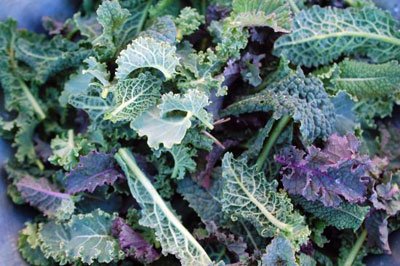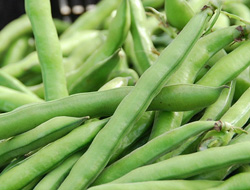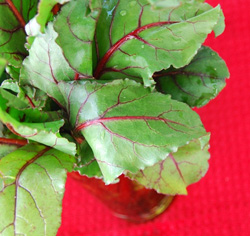 Of all the spring vegetables, asparagus is one of the easiest to prepare…simply grilled, oven roasted or shredded raw as a salad, it needs little more than salt and lemon to qualify as a side dish. But if you’re looking to dress up those slender stalks in a more elegant way, try this: Cold Poached Asparagus with Skinny Basil Mayonnaise.
Of all the spring vegetables, asparagus is one of the easiest to prepare…simply grilled, oven roasted or shredded raw as a salad, it needs little more than salt and lemon to qualify as a side dish. But if you’re looking to dress up those slender stalks in a more elegant way, try this: Cold Poached Asparagus with Skinny Basil Mayonnaise.
When my children were little and I was housebound, I threw some pretty elaborate dinner parties (it was the only way I could make sure I had decent adult conversation and good wine once a week), and a starter salad of asparagus with basil aioli (which is simply homemade mayonnaise) was always in my spring rotation.
With just 40 calories a cup and loaded with folic acid, antioxidants and tummy filling fiber, asparagus is one of nature’s great gifts to dieters. But homemade mayo, which is made mostly of oil and egg yolks, is not.

 While I wait (and wait) for our local asparagus, it occurs to me that everyone else is not waiting. The grocery stores are full of asparagus (from elsewhere, wherever that is) and it is hard to walk down the produce aisles without snatching up a bunch. I understand, really I do, and that is probably why my two blogs on asparagus from last year are getting hit up a lot these days. So okay, I can’t be my stubborn self and wait another month to offer up more asparagus recipes. Especially because there are about a gazillion different ways to cook asparagus—almost all of them pretty darn quick—so I can come back to this provocative vegetable again. Soon.
While I wait (and wait) for our local asparagus, it occurs to me that everyone else is not waiting. The grocery stores are full of asparagus (from elsewhere, wherever that is) and it is hard to walk down the produce aisles without snatching up a bunch. I understand, really I do, and that is probably why my two blogs on asparagus from last year are getting hit up a lot these days. So okay, I can’t be my stubborn self and wait another month to offer up more asparagus recipes. Especially because there are about a gazillion different ways to cook asparagus—almost all of them pretty darn quick—so I can come back to this provocative vegetable again. Soon. Let’s talk about spring greens, specifically baby kale. I am very excited that baby kale is finally making it into mainstream supermarkets. I’ve seen more of it just in the last couple months, since I first mentioned it in a
Let’s talk about spring greens, specifically baby kale. I am very excited that baby kale is finally making it into mainstream supermarkets. I’ve seen more of it just in the last couple months, since I first mentioned it in a  Finally, the wait is over! Fava beans are in season. They appeared for the first time last Sunday, and I couldn't be happier. I know how hard the wait has been on you too, but you can rest easy now. Well don't rest too easily. Fava beans have a depressingly short season--usually just 4-5 weeks in April-May.
Finally, the wait is over! Fava beans are in season. They appeared for the first time last Sunday, and I couldn't be happier. I know how hard the wait has been on you too, but you can rest easy now. Well don't rest too easily. Fava beans have a depressingly short season--usually just 4-5 weeks in April-May. A few weeks ago at the farmers' market I asked for a bunch of beets. The farmer grabbed a beautiful bunch: five crimson colored globes topped with remarkably long, red stalks and large, crisp leafy greens. I could practically taste them.
A few weeks ago at the farmers' market I asked for a bunch of beets. The farmer grabbed a beautiful bunch: five crimson colored globes topped with remarkably long, red stalks and large, crisp leafy greens. I could practically taste them.
